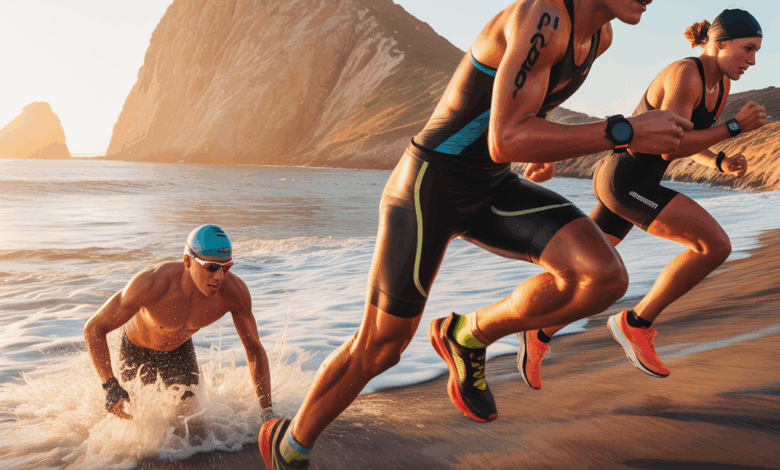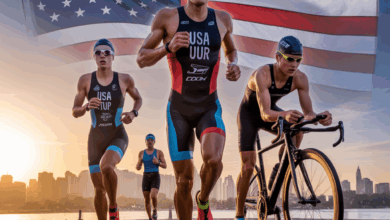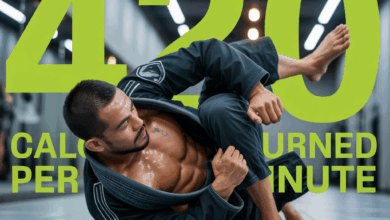Morro Bay Triathlon All About

Have you ever pictured yourself crossing a finish line with Morro Rock looming behind you, salt on your skin and a crowd cheering? If so, you’re asking the exact question many athletes do before their first coastal triathlon: what is the event like, and how do I prepare? In this guide we’ll dive into morro bay triathlon all about — from course specifics and training plans to race-day nutrition and realistic workout options for every level.
Why Morro Bay? The charm of a coastal triathlon
Morro Bay is one of those race destinations that blends a scenic backdrop with approachable distances, making it popular among beginners and experienced triathletes alike. The ocean swim, rolling bike course, and flat-to-rolling run make for an enjoyable, tactical race where preparation beats pure power. Expect wind possibilities, cooler water temperatures, and spectacular views — all factors that shape how you should train and perform.
morro bay triathlon all about: course, distances, and atmosphere
The Morro Bay Triathlon typically offers sprint and Olympic distances, sometimes with relay options. Here’s a general breakdown:
- Swim: Open-water ocean swim (buoys, sighting required) — usually 750m (sprint) or 1500m (Olympic).
- Bike: Coastal roads with mild hills and possible wind — around 20 km (sprint) or 40 km (Olympic).
- Run: Flat to slightly rolling 5 km (sprint) or 10 km (Olympic) along the waterfront.
The community feel and volunteer support are strong, so it’s a great race for first-time triathletes or those looking for a performance-oriented yet relaxed event.
Training strategies: smart, specific, and sustainable
Training for the Morro Bay Triathlon should be tailored to open-water swimming and bike handling in coastal conditions. Quality over quantity wins here — consistent, purposeful sessions will get you farther than a last-minute mileage binge.
Sample 8-week training block (beginner — sprint distance)
- Weeks 1–4: Base building — 2 swims, 2 bikes, 2 runs per week + 1 strength session (30–45 min)
- Weeks 5–7: Build — introduce brick sessions (bike-to-run), interval sets, and longer open-water swims
- Week 8: Taper — reduce volume by 30–50% while keeping short intensity
Example week:
- Mon: Swim technique 1,200m (drills + steady intervals)
- Tue: Bike 45–60 min (intervals: 5×3 min @ threshold)
- Wed: Run 30 min easy + strength
- Thu: Brick — 40 min bike + 15 min run
- Fri: Swim open-water practice or pool sighting drills
- Sat: Long bike 60–90 min steady
- Sun: Long run 45–60 min easy or race-pace finish
Key workouts to prioritize
- Open-water swims: practice sighting, wetsuit feel, and mass-start simulations.
- Brick sessions: short bike-to-run efforts to adapt to the “jelly legs” transition.
- Interval training: threshold and VO2Max sets on bike and run to improve speed endurance.
- Strength and mobility: two 30–40 minute sessions per week to reduce injury risk and improve power.
Nutrition and race-day fueling
Good fueling starts in training. For a sprint race, aim to practice your pre-race breakfast and mid-race gels or chews during long training sessions so your gut knows what to expect.
- Pre-race: 2–3 hours before — a meal with carbs and moderate protein (e.g., oatmeal with banana and yogurt).
- Hydration: Coastal races can be cooler, but salt loss still matters — use electrolytes during training sessions to gauge needs.
- During sprint race: small gel 15–30 minutes pre-start or immediate post-start; for Olympic distance, plan 1 gel per 30–45 minutes depending on intensity.
For more detailed meal timing and macronutrient planning, see our nutrition guides page.
Practical race tips and gear checklist
- Wetsuit practice: If a wetsuit is allowed, practice swimming in one — it changes your buoyancy and sighting mechanics.
- Bike prep: Check tire pressure, brakes, and chain; carry a spare tube and multi-tool.
- Transition speed: Set up a mock transition area and practice quick mount/dismount drills.
- Weather readiness: Coastal wind and fog can change race dynamics — bring layered warm clothes for pre- and post-race.
Beginner variations and relay options
If you’re new, consider the sprint distance or a relay team where you handle only one leg (swim/bike/run). That’s a great way to experience the race without overcommitting or risking burnout.
Real-world example: How one beginner completed Morro Bay
Emily, a 34-year-old teacher, signed up for the sprint Morro Bay triathlon with zero open-water experience. She followed an 8-week plan: two coached swim lessons (focusing on sighting), weekly brick workouts, and a single long bike day per week. Race morning nerves were high, but practiced warm-up and a conservative swim pace got her to T1 with energy. Her bike discipline and practiced transition shaved time off, and a disciplined run brought her to the finish with a huge grin. Preparation and consistency, not last-minute intensity, made the day successful.
Injury prevention and recovery
Triathlon training is multi-disciplinary — which is great for balanced fitness but increases cumulative load. Include these recovery strategies:
- Active recovery days: light swims, mobility, or yoga.
- Sleep: aim for 7–9 hours to support adaptation.
- Foam rolling and targeted soft-tissue work for frequently tight areas (calves, quads, shoulders).
- Periodic deload weeks every 3–4 weeks if training volume is high.
For sample strength and mobility routines tailored to endurance athletes, check out our workout routines section.
Frequently Asked Questions
Q: What distance is the Morro Bay Triathlon, and which should I choose?
A: Distances typically include sprint and Olympic options. Choose based on your current training — if you’re new to triathlon or have limited training time, the sprint is ideal. Experienced athletes may prefer the Olympic for more sustained effort.
Q: How important is open-water practice for this race?
A: Very important. Ocean conditions, currents, and sighting differ from pool swimming. Incorporate at least a few open-water sessions, practice sighting and pack starts, and consider a wetsuit trial if permitted.
Q: What are common mistakes first-timers make at Morro Bay?
A: Common errors include starting too fast on the swim, ignoring wind conditions on the bike, poor transition planning, and not practicing nutrition. Training with these scenarios in mind reduces surprises on race day.
Conclusion: Ready to race Morro Bay?
Whether you’re exploring morro bay triathlon all about as a first-timer or refining your race plan, the keys are specific open-water practice, targeted brick sessions, and smart nutrition. Start with realistic, consistent training and build toward race-specific workouts. If you want help building a race plan or prepping your nutrition and recovery, dive into our wellness tips and resources, then sign up for a local open-water clinic. See you at the start line — and don’t forget to enjoy the view.
Call to action: Ready to start training? Download a beginner-friendly 8-week plan or contact a coach to customize your Morro Bay strategy today.





